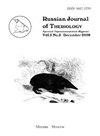来自五个俄罗斯种群的发情雄性马鹿的咆哮动力学
IF 0.6
4区 生物学
Q4 ZOOLOGY
引用次数: 4
摘要
在俄罗斯,目前的鹿种群代表了从中亚起源中心自然辐射出来的祖先马鹿的碎片残余和由当地马鹿灭绝地的人们重新储存或用于农业生产的种群的混合。雄性发情咆哮活动是马鹿繁殖的重要组成部分,但目前尚无统一的咆哮动态评价方法。本研究提出了将整个发情期细分为阶段(开始、活跃、消退)的标准,适用于种群地理区域、动物密度、亚种或每小时呼叫次数绝对值的差异。使用这种方法,我们通过使用每个种群两个间隔的自动记录设备,在52–60天的发情期内记录5分钟/小时、24小时/天的咆哮声,每小时估计属于三个亚种的五个马鹿种群的鹿发情咆哮活动。每个种群的两个间隔记录器提供了类似的发情动态数据,尽管每小时呼叫次数的绝对值不同。在五个研究群体中的四个群体中,发情期涵盖了大致相同的日历日期,从8月的最后几天到10月的最后十天。发情期的平均咆哮活动在种群之间差异很大(从4-15次/小时到319-377次/小时)。一天中的时间对发情期咆哮活动的影响不同。讨论了这种可变性的可能原因。如何引用这篇文章:Rusin I.Yu.,Volodin I.A.,Sitnikova E.F.,Litvinov M.N.,Andronova R.S.,Volodina E.V.2021。五个俄罗斯种群发情雄性马鹿的咆哮动态//俄罗斯J.Theriol。第20卷第1期。P.44–58.doi:10.15298/rusjtheriol.01.06。本文章由计算机程序翻译,如有差异,请以英文原文为准。
Roaring dynamics in rutting male red deer Cervus elaphus from five Russian populations
In Russia, current populations of Cervus elaphus sensu lato represent a mix of fragmented remnants of ancestral red deer naturally radiated from their center of origin in Middle Asia and populations, either re-stored by people at places where the native red deer are extinct or kept for agricultural production. Male rutting roaring activity represents an important part of red deer reproduction but there are no methods for unified evaluation of roaring dynamics. This study proposes the criteria for subdividing the entire rut period to phases (start, active, fading), applicable irrespectively to differences in population geographical area, animal density, subspecies or absolute values of call number per hour. With this approach, we estimate stag rutting roaring activity on hourly basis in five populations of red deer belonging to three subspecies by using two spaced automated recording devices per population, recording roars for 5 min/hour, 24 h/day, for 52–60 days of rutting period. Two spaced recorders per population provided similar data on rut dynamics, although absolute values of call number per hour were different. In four of the five study populations, rut period covered approximately the same calendar dates, from the last days of August until the last ten days of October. The mean roaring activity over a rut period differed strongly between populations (from 4– 15 calls/h to 319–377 calls/h). Effects of time of day on roaring activity differed between rut phases. The possible reasons of this variability are discussed. How to cite this article: Rusin I.Yu., Volodin I.A., Sitnikova E.F., Litvinov M.N., Andronova R.S., Volodina E.V. 2021. Roaring dynamics in rutting male red deer Cervus elaphus from five Russian populations // Russian J. Theriol. Vol.20. No.1. P.44–58. doi: 10.15298/rusjtheriol.20.1.06.
求助全文
通过发布文献求助,成功后即可免费获取论文全文。
去求助
来源期刊

Russian Journal of Theriology
Agricultural and Biological Sciences-Animal Science and Zoology
CiteScore
0.90
自引率
33.30%
发文量
0
期刊介绍:
The Russian Journal of Theriology publishes papers on all aspects of mammalian biology: taxonomy, zoogeography, ecology, behavior, morphology, development, physiology, paleontology, and evolution. Studies of extinct as well as extant taxa are included. Reviews are also published; these may be invited by the Editorial Board.
 求助内容:
求助内容: 应助结果提醒方式:
应助结果提醒方式:


